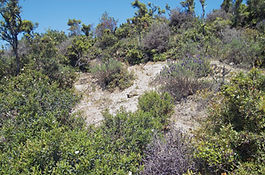
My turtle story
Schildkröten begleiten mich nun schon seit über 50 Jahren. Solange ich zurückdenken kann sind Landschildkröten in unserem Garten auf der Wiese herumgelaufen und Wasserschildkröten in einem, damals noch betonierten, Gartenteich geschwommen.
Ich kann mich auch noch sehr gut daran erinnern, dass die Landschildkröten in Schuhkartons bei uns auf der Terrasse standen und tagsüber in einem hasengitterähnlichen Laufstall auf die Wiese durften. Damals wusste mein Vater über die Tiere noch sehr wenig.
Gefüttert wurden die Schildkröten mit Tomaten, Gurken, Bananen, Äpfeln, Pfirsichen, Erdbeeren und vorzugsweise selbst mit Küchenabfällen und Essensresten, wie Nudeln und dergleichen. Man fütterte die Schildkröten sogar mit in Milch eingeweichtem Weisbrot, weil das ja auch die Igel gerne fraßen. Als besonderer Leckerbissen wurde Hackepeter (Gehacktes Schweinefleisch) angeboten. Die Schildkröten liebten diese Ernährung, obwohl sie aus heutiger Sicht völlig ungeeignet war und in den meisten Fällen zum frühzeitigen Tod der Tiere führte.
Natürlich haben die Schildkröten auf der Wiese auch Pflanzen gefressen und bekamen zusätzlich Löwenzahn, Klee und Wegerich, viel mehr Futterpflanzen hatte mein Vater und anfänglich auch ich, gar nicht gekannt.


Unfortunately, there was also the bad habit of keeping the turtles on a leash. For this purpose, a hand drill was used - there were no drills yet - a hole was drilled in the back of the armor. This was not done maliciously and certainly not to torture the animals. No one really thought about it, but wrongly assumed that the armored edge was dead tissue, similar to fingernails. They just wanted the turtles, who were eager to break out, not to freak out and run around in the neighbor's garden.
It wasn't until much later that I found out why the fully grown turtles, which were then available in the pet shop and even at weekly markets, wanted to run away all the time.
Even then, I tried very hard for the well-being of our turtles. However, I could not find out much. The only thing the zoo dealer in our city knew was that he did not get his animals from Greece or Yugoslavia, as was customary at the time, but from Italy. There the turtles would live in bushes right by the sea. The only literature I had at my disposal was a small booklet from the teacher library from 1956. However, from today's perspective, the advice contained here was still far from the natural and thus species-appropriate keeping of our animals.
Already at a young age I was interested in the natural habitat and, above all, in the way of life of the European turtles in the wild and first used the holidays in Italy with my parents to find and observe the animals in nature.
In the years that followed, most of my vacations, and later my family's vacation trips, were shaped by the turtles. While my wife Gabriele looked after our children Jennifer and Manuel at the booth most of the time, I was in the surrounding dunes and hills between the bushes with the turtles.
Whenever the opportunity arose, I drove with Gabriele and our dog in the mobile home to the south to study the animals on site. For a long time now, these excursions had nothing to do with vacation trips in the true sense of the word. Nevertheless, for me they were always a balance and a recovery from my previous work. Since my retirement in 2012, I am no longer bound to specific times for my excursions.



Through these many excursions to all European countries with natural turtle populations, nature was the model for keeping my animals a long time ago.



With the appropriate additional technology, I have gradually tried to create a habitat that is as close to nature as possible in which my turtles can lead a wild animal life more or less left to themselves.



A long time ago, one could also say towards the end of the last century, Manuel, then 14 or 15, came up with a “selfless idea”. He persuaded me that I absolutely had to make a homepage about my turtles. At the time, he was more concerned with the internet connection required for this. Finally he was able to persuade me. However, Manuel not only surfed the net himself, he actually created a homepage with me. Since then my HP www.testudo-farm.de has been a much visited and copied turtle site.
My first book “The natural keeping and breeding of the Greek tortoise” was created from this homepage in 2003. The book is already available in its third edition and also in an English edition.



In the following years I wrote several books about the Mediterranean turtles and an illustrated travel book about Albania and published them in my own publishing house.

"European turtles, habitat and way of life", the book is also available in an English edition "Mediterranean Tortoises".


"European turtles, habitat and way of life", the book is also available in an English edition "Mediterranean Tortoises".

"Forage Plants", the English edition "Feeder Plants" is in preparation.



I have also been staying here since 2003 Turtle conferences and at club evenings lectures on the subject of turtles.
You can always find up-to-date information, especially travel reports from my excursions to the habitats, at https://www.facebook.com/wegehaupt.verlag
Contact
Email: W.Wegehaupt@gmx.de
